8 Bold Winter Flowering Plants To Brighten Your Garden In Winter
Winter flowering plants are perfect for adding color to your garden during winter. With the cold weather and heavy rains, it can be hard for flowering plants to grow.
But your garden doesn’t have to stay empty till the following spring.
Some plants bloom during winter and can offer your garden a splash of color during the cold season.
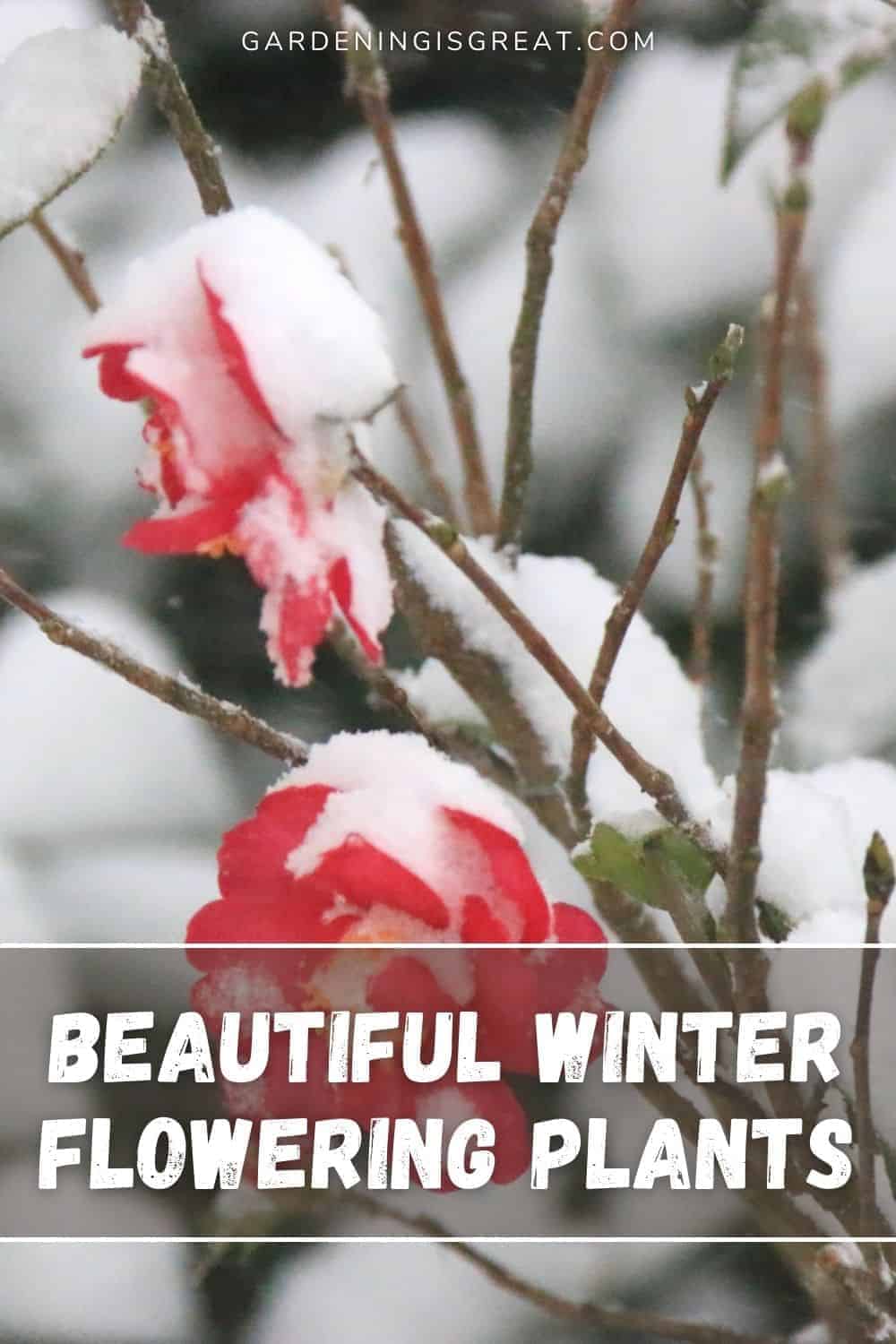
Here are 8 winter flowering plants to ensure you experience blooming flowers all year round:
Winter Honeysuckle
Winter honeysuckle offers creamy white flowers that can be grown as a small bush or hedge up to 2 meters.
Native to China, this beautiful shrub is an ideal plant for growing all year round. It offers round green leaves all year long, with berries in the summer and flowers during the winter and spring.
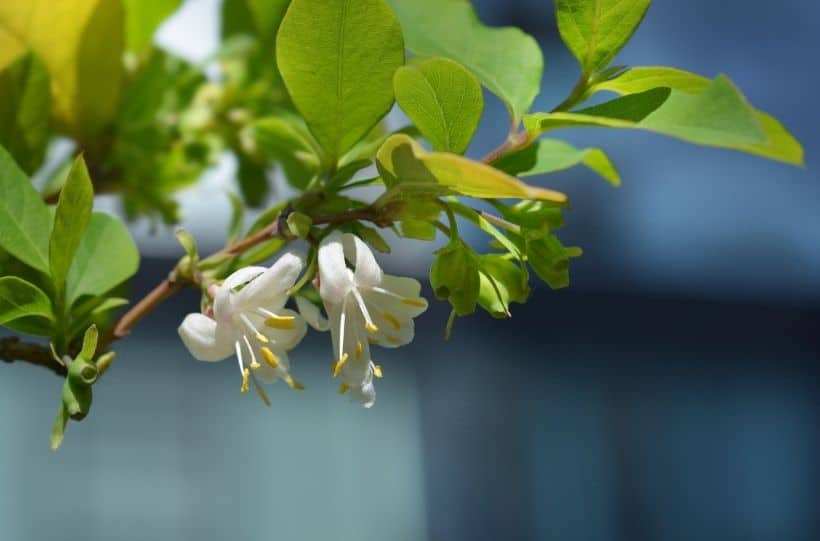
It is an ideal plant to grow to offer year-round shelter to wildlife along with food for pollinators during the winter.
To grow, this winter flowering plant is best positioned in well-drained soil with access to at least partial sunlight.
As winter honeysuckle is a perennial plant, with maintenance and care, it will regrow each year offering flowers every winter.
Hellebores
Another perennial, if you are looking for a stunning winter flowering plant this is an excellent variety to choose from.
Hellebores are generally easy to care for as long as they are not dug up and moved once established.
They require an area with good drainage with fertile soil and at least partial sunlight. They can be planted at any time of the year, but it is best to ensure they have an opportunity to settle before the first frost.
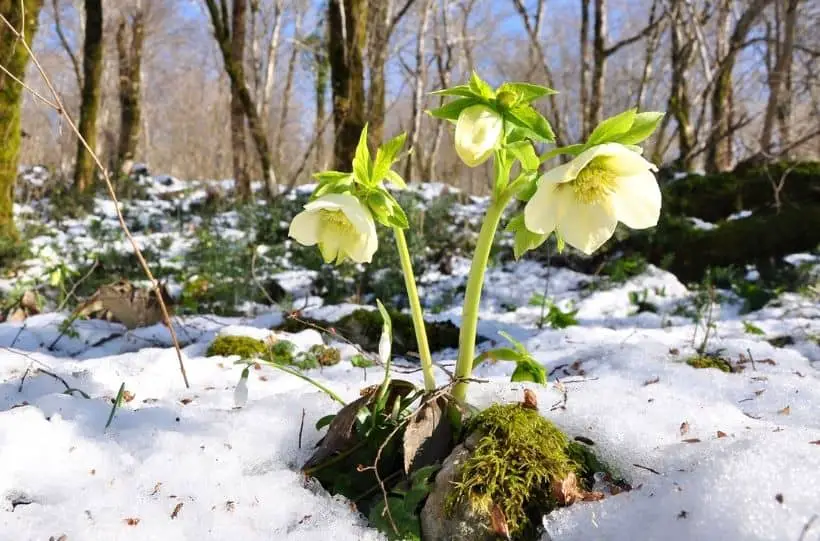
This variety of plants offers deep green leaves all year round with beautiful cup-shaped flowers that open facing downwards. The flowers can be purchased in a range of colors from elegant whites to mottled purples.
Hellebores are full of nectar and pollen so opening downwards helps to protect them during harsher weather.
They have a long flowering season from January to May, which provides vital food for pollinators such as bees during the winter months.
Pansies
Panies are available in a wide variety of colors. Though you usually think of pansies as a summer flowering plant, they do very well during the winter.
Planting pansies during the fall will lead to them flowering during winter. Though the flowers do not last long, you can encourage more buds by removing dead and faded flowers regularly.

Many gardeners prefer to remove pansies each year and start a new batch the following season. However, with a good level of care, your pansies will regrow the following year.
They are best planted in moist, fertile soil with good drainage and access to full sunlight.
Winter Aconites
For a more unique winter flowering plant, consider choosing the winter aconites. This stunning flower grows on a long stem with a ring of small, deep dark green leaves surrounding a delicate yellow flower.
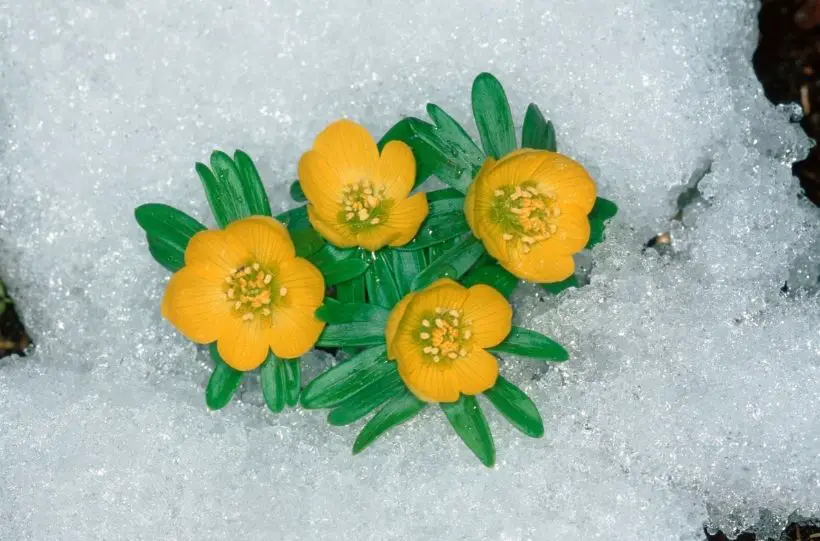
The plant is small, so it is best to plant several in groups for maximum effect. During the winter, they flower between February and March and stand out when in bloom together.
Winter aconites are best planted in well-drained soil with access to partial sunlight. If maintained well, they will naturally spread and return with even more flowers each following year.
Snowdrops
Snowdrops are a classic winter flowering plant and are often what we envision when we think of flowers that bloom in winter.
Though small, they offer an upside-down opening three-petaled white flower that hangs like a bell at the top of long, thin stems.
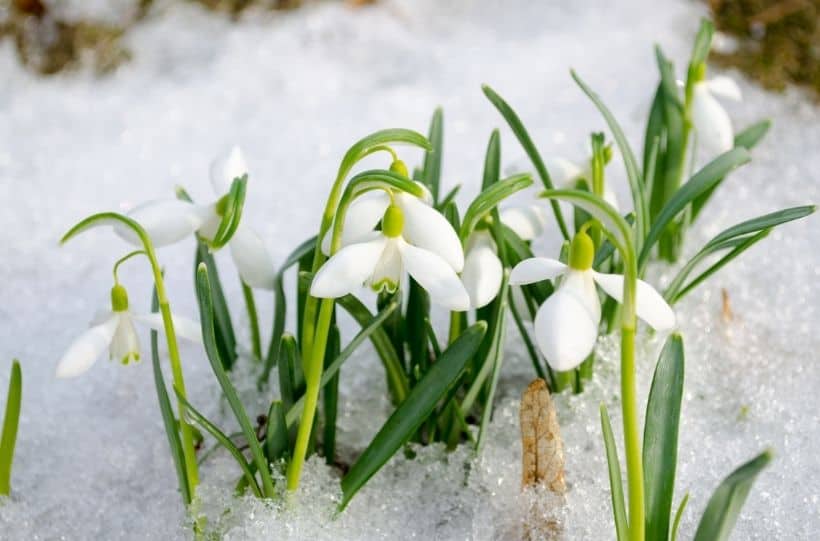
They can be planted from the bulb but need planting in moist soil as they do not do well when too dry. They are best planted during the fall so that they have time to establish themselves before flowering between January and March.
Snowdrops do become dormant during Spring and Summer, so remember to be careful when planting summer flowers to not accidentally dig up or damage the dormant bulbs.
Coronilla
Coronilla is a winter-flowering shrub that can grow up to 1 meter tall and 1 meter wide. During Spring and Winter, the shrub offers bunches of yellow flowers mixed amongst delicate green foliage.
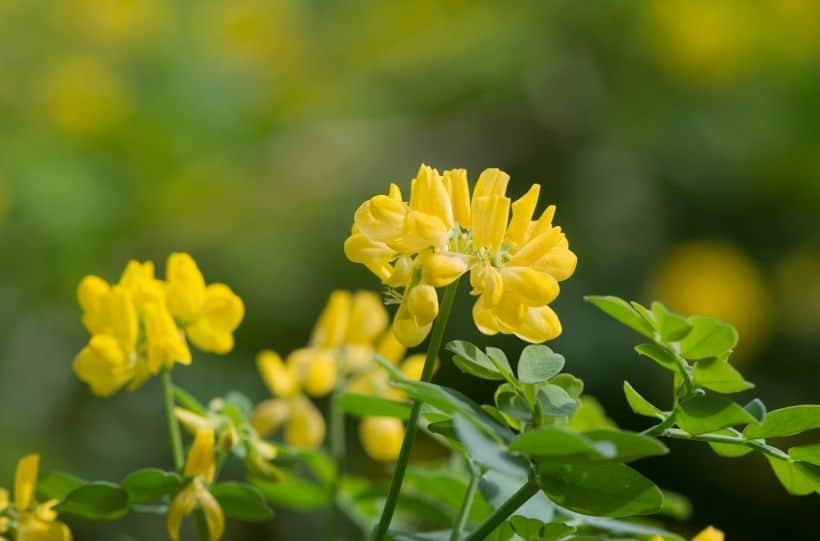
This bush does prefer to be planted with access to full sunlight but in a sheltered area of your garden.
Coronilla can be available as an annual or perennial plant. If you would like your shrub to regrow and flower each year, it is best to choose the perennial option.
Edgeworthia
Another bright yellow flower during winter, Edgeworthia blooms during winter and spring. They have delicate tiny yellow flowers that appear around a center, open bud.
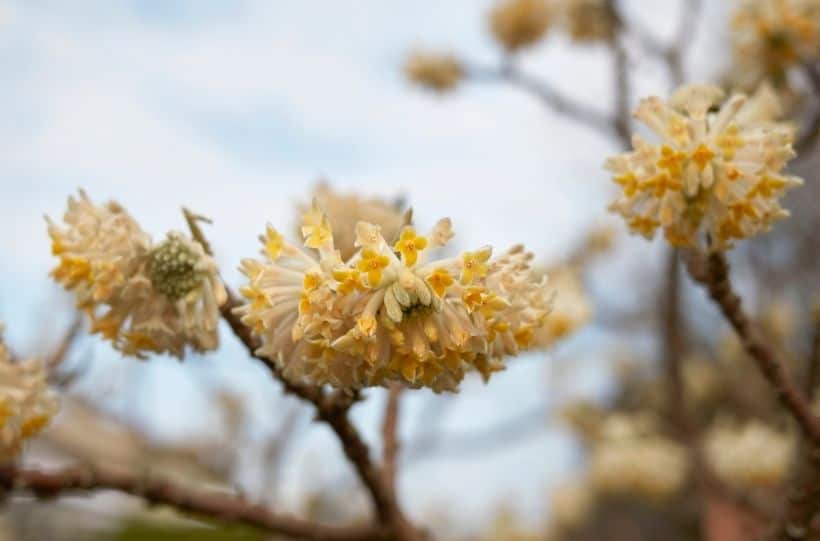
Edgeworthia’s leaves do not appear until spring and summer, so the yellow flowers are bright against the long, brown twigs of this small shrub.
If growing this winter flowering plant, it is best positioned somewhere that receives a good amount of shelter from strong winds. It also prefers full sunlight and to be planted in well-drained soil.
Camellia
For a show-stopping winter flowering plant, it is worth considering camellias. These stunning shrubs are available in a range of varieties that, if planted together, can ensure you have flowers blooming all year round.
For winter-blooming camellia’s, choose varieties such as Bonomiana, Lavinia Maggi, or Bob Hope. Winter blooming camellia’s offer vibrant reds and pinks to your winter-flowering garden.
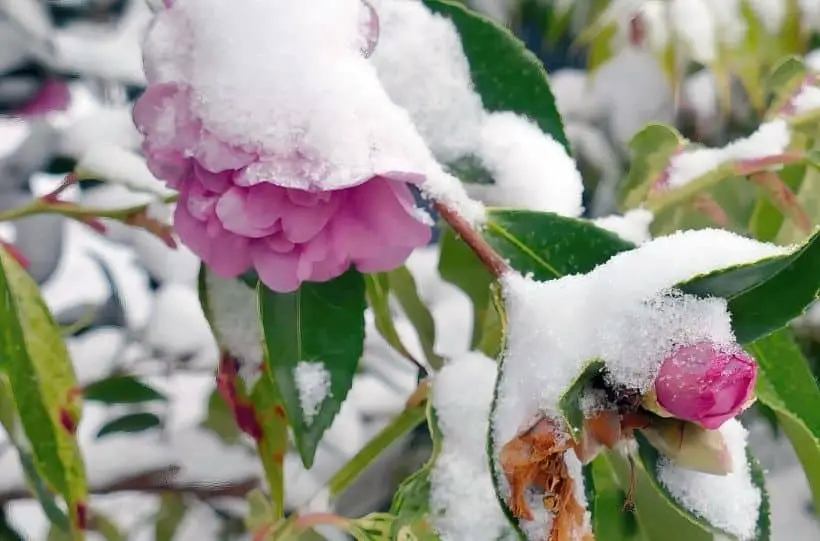
Once planted, they require low maintenance. Camellia’s prefer partial sunlight and require well-drained soil.
Planting a range of these winter flowering plants is guaranteed to set your garden up to be a magnificent display of color during the cold winter months.
From delicate snowdrops to show-stopping camellia’s, there is something for every sized garden. Each of these winter flowering plants is easy to maintain and will return every single year.
For more seasonal gardening tips, take a look at some of our audience’s favorite posts below:
